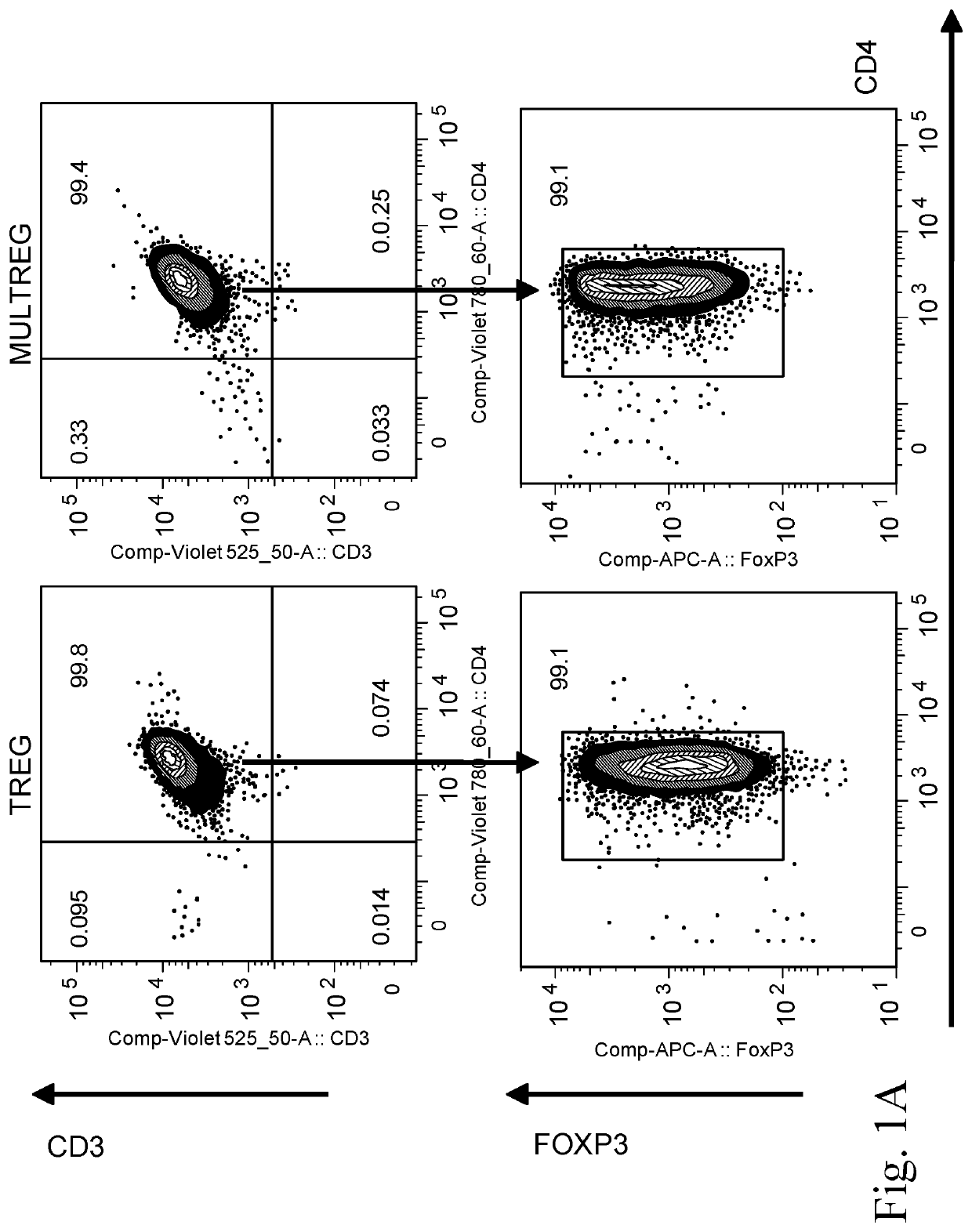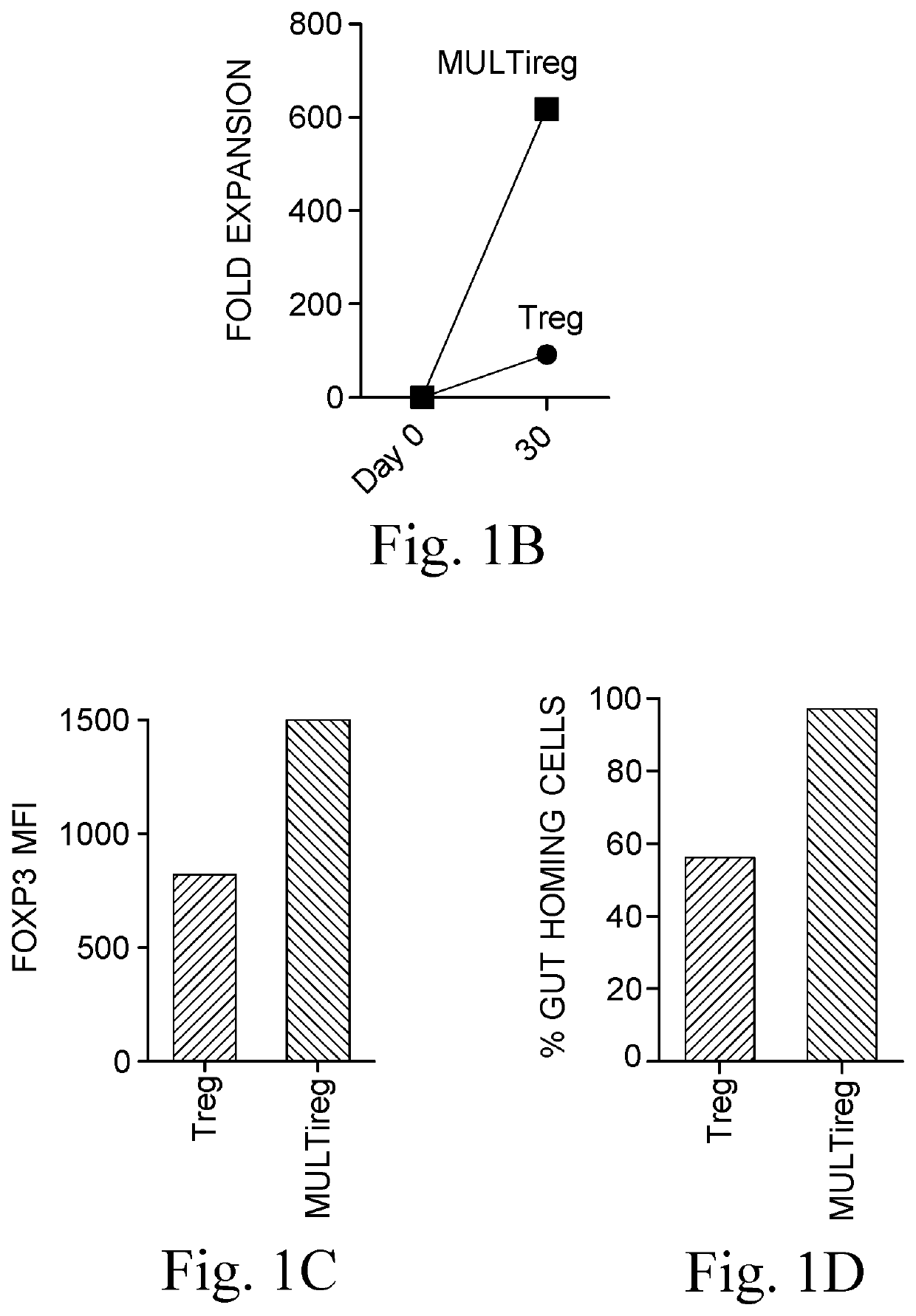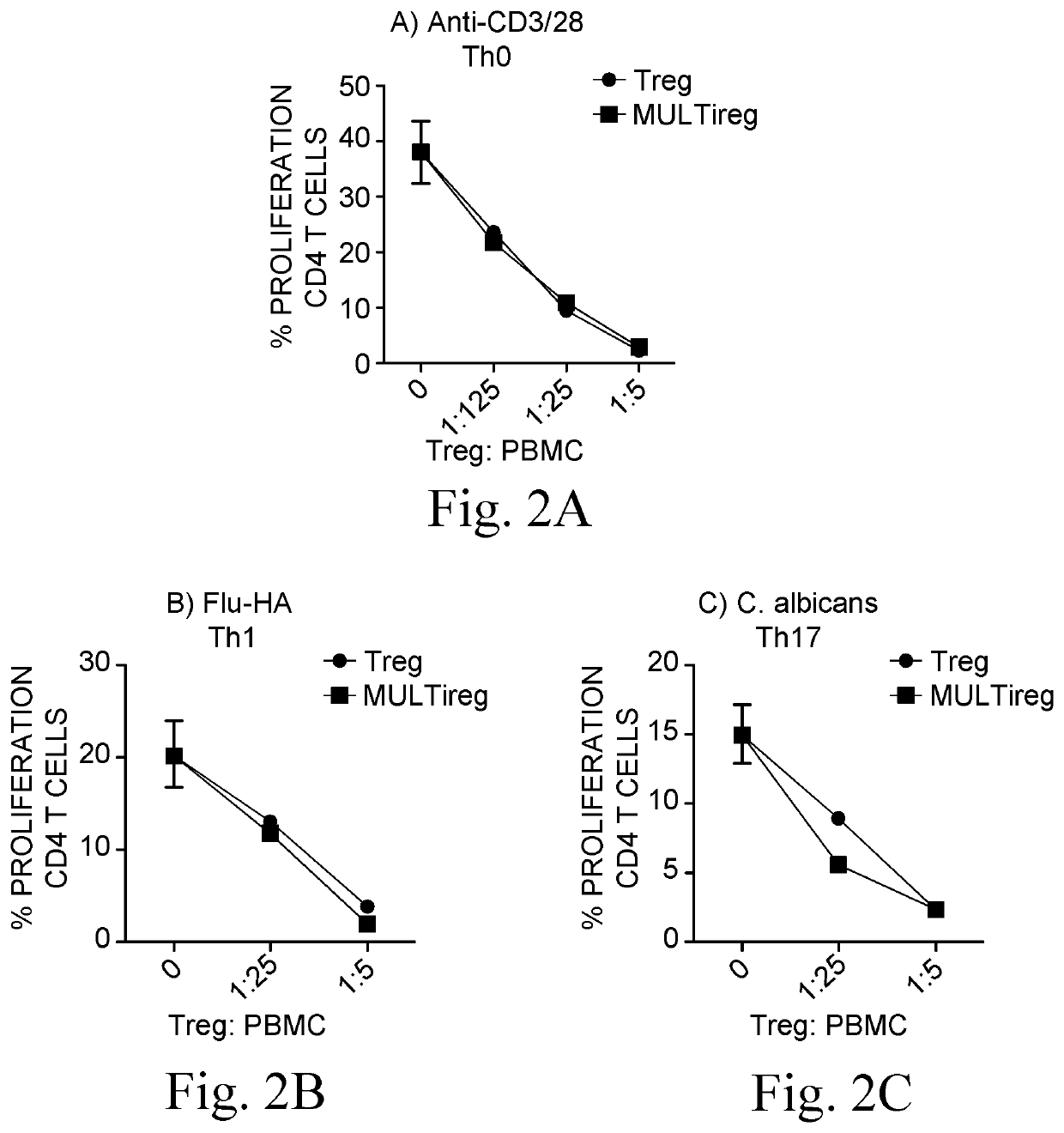Methods for enhancing proliferation of t regulatory cells
a technology proliferation enhancement, which is applied in the field of methods for enhancing the proliferation of t regulatory cells, can solve problems such as technical challenges in obtaining sufficient yields for transfer, and achieve the effect of increasing potency
- Summary
- Abstract
- Description
- Claims
- Application Information
AI Technical Summary
Benefits of technology
Problems solved by technology
Method used
Image
Examples
example 1
[0215]Donor T198 Tregs (viable CD4+CD25highCD127low cells) were sorted from fresh PBMCs using GMP compliant antibodies and expanded using the current gold standard Treg protocol (anti-CD3 / 28 coated beads in the presence of IL-2 and rapamycin) in the presence or absence of 1:10 BM9 MultiStem. The current consensus ‘gold standard’ protocol for expansion of polyclonal Tregs involves FACS sorting or magnetic isolation of CD4+CD25highCD127low lymphocytes from peripheral blood followed by 4 rounds (each 10-14 days) of stimulation with anti-CD3, anti-CD28 beads in the presence of high concentrations of IL-2 and the immunosuppressive drug rapamycin (included to limit outgrowth of contaminating Teff cells).
[0216]Cells expanded in the presence of MultiStem were given the concept name “MULTireg”. After 3 rounds of sequential (10 day) expansion, Tregs and MULTireg were cryopreserved or examined for total cell number, purity, FoxP3 expression, markers of differentiation (CCR7 and CD27), and tiss...
PUM
| Property | Measurement | Unit |
|---|---|---|
| time period | aaaaa | aaaaa |
| concentration | aaaaa | aaaaa |
| concentration | aaaaa | aaaaa |
Abstract
Description
Claims
Application Information
 Login to View More
Login to View More - R&D
- Intellectual Property
- Life Sciences
- Materials
- Tech Scout
- Unparalleled Data Quality
- Higher Quality Content
- 60% Fewer Hallucinations
Browse by: Latest US Patents, China's latest patents, Technical Efficacy Thesaurus, Application Domain, Technology Topic, Popular Technical Reports.
© 2025 PatSnap. All rights reserved.Legal|Privacy policy|Modern Slavery Act Transparency Statement|Sitemap|About US| Contact US: help@patsnap.com



